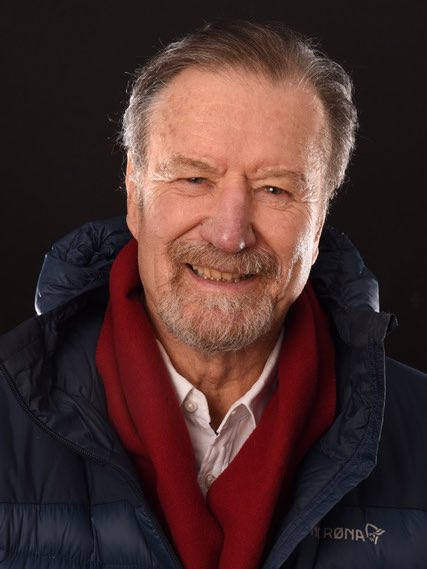
Kurt Schneider brings light into the labyrinth of emotions
This book is intended to show physiological and life-historical backgrounds of our emotional experiences. I would like to bring light into the labyrinth of feelings, to awaken the desire to experience emotions and to try to show that the world of feelings is closely related to love (of being), the very reason of life.
At the same time, I make the by no means modest claim that my model of emotions provides the reader with a map of the confusing world of emotions that is not only empathetic but also astonishingly accurate.
5 building blocks and 4 levels of emotion
Five building blocks – being-love, bioenergyand pain, as well as the biologically-reactive fight-or-flight systemand the self – together with four levels of feeling – body level as well as the levels of the primary and the secondary self and the zenreality – form the core of my model of feeling. I describe it in Part 1, which is devoted to feelings in general. Here you will also find a digression on the terms main, secondaryas well as zenreality,which I use more often.
A central factor for the modification of feelings is formed by socialization. The idea that the concept of the self should be divided into an original primary self as well as an educated secondary self depending on the stage of socialization may alienate many. Nevertheless, this approach is unavoidable for me, because two different kinds of feelings can be derived from this fact, which I call primary and secondary feelings.
In the 2nd part I explain my primary-self-secondary-self model as well as in a further digression the socialization, which is the decisive factor for the distinction of the two self-states I postulate.
Love, recorded scientifically
While for the average person love is considered one of the most important feelings, this is by no means the case from a scientific point of view. Not only there are no clear criteria to the “love”; with few exceptions no investigations are available for it, neither field studies, nor experiments in one of the university feeling laboratories. This non-perception applies especially to the homeostatic basic state of being-love.
The 3rd part deals with love, especially with the basic state of being-love, which as a result of socialization changes into purpose-love, as well as with primary arousal-love, which in the course of the socialization process changes into the manifestations of secondary arousal-love and sexual fantasies.
A digression on Meditation and on Talorgasm gives a streamlined overview of two topics crucial especially in the context of being-love, but also for decoding the emotional world. A further excursus on the communication model of transactional analysis and my extensions through being-love and transcendence is intended to illustrate the basic features of “loving”communication as well as the transcendent state.
The exploration of pain and its repression
Pain, like love but for different reasons,is tradedas a non entity in the study of affect. An essential part of my effort is to show that pain, especially the psychic form resulting from loss of love or deprivation of love, is to be regarded as the actual key phenomenon in the origin and development of human emotions. The clarification of these connections is the task of the 4th part.
In addition to the basic negative feelings rage and anxiety, I thematize here the secondary feelings offending, angeras well as the fears of civilization. Moreover, I describe the whole spectrum of the complex feelings of the cascade of displacement..
The concept of (bio-)energy, from the scientific point of view, moves in a gray area. Neither in the official physics nor in the psychological literature there is tangible evidence for its existence, even though SIGMUND FREUD used the term again and again in his writings. To be sure, according to my understanding this “life energy” plays a decisive role very close to the basis of feeling; nevertheless, I refrain from explaining it further.
Instead of this I am content with the extended meaning which energy has in the general, not physical linguistic usage. I consider the increase of the “life energy” as the decisive trigger of feelings. In addition, I refer in my model to the close relationship between the pain and the basic feelings of anger and fear.
Finally, the individual consequences of dealing with the pain of love withdrawal are discussed: besides the necessity of social adjustment, the way back to being-love of the primary self as well as the treatment and healing of psychic pain are up for discussion.
Everyday thinking and science find each other
It is my endeavor to make the feelings and in particular the phenomenon of love more scientifically understandable. Nevertheless, I do not claim academic completeness and accuracy. My central concern is rather to connect areas that are usually considered incompatible both in our everyday thinking and within the various scientific disciplines. Essential findings – which I cannot, however, prove scientifically – I have listed as theses.
For those interested in physiological connections in the area of feelings, there are physiological digressions on feelings, on love in general as well as on primary and secondary arousal love and on love of being towards the end of the respective chapters. For the understanding of my model of feelings, however, these additions are not indispensable.
The 4 levels of the emotion model
- Die Körperebene (Hauptrealität)
- Die psychische Ebene des Primärselbst
- Die psychische Ebene des Sekundärselbst (Hauptrealität)
- Die spirituell-religiöse Ebene
| 4 Gefühlsebenen ⇥ ––– Kriterien ↧ | 1. Körperebene | 2. Psychische Ebene Primärselbst | 3. Psychische Ebene Sekundärselbst | 4. Spirituell-religiöse Ebene |
|---|---|---|---|---|
| Definierung von Selbst | Wesen | Primärselbst | Sekundärselbst (Ich/Ego) | Nicht-Selbst |
| Wahrgenommene Realität | Hauptrealität | Nebenrealität – pränatal – Säugling | Hauptrealität | Zen-Realität Kosmische Realität |
| Grad der Bewusstheit | vorbewusst | unbewusst | «bewusst» | bewusst |
| Wahrgenommene Gefühle | Körper-Empfindung | psychische Primärgefühle | psychische Sekundärgefühle | Energie-Wahrnehmung |
5 BAUSTEINE
- Selbstliebe (unbewusst/ bewusst)
- Energie/Erregung
- Schmerz
- Kampf-/Flucht Reflex
- Sozialisation
Die Entwicklung der Bausteine
in Bezug auf die Gefühlsebenen
| 4 Gefühlsebenen ⇥ ––– 5 Bausteine ↧ | Körperebene Hauptebene | Primäre psychische Ebene | Sekundäre psychische Ebene Hauptebene | Spirituell-religiöse Ebene |
|---|---|---|---|---|
| 1. Grundform der Liebe | Sein | unbewusste Seinsliebe | Zweckliebe | bewusste Seinsliebe |
| 2. Grad der Energie / Erregung | Energie (Sexual-)Erregung | primäre Erregungsliebe | sekundäre Erregungsliebe Fantasie, Ersatz | Energie-Wahrnehmung Tantra, Ekstase |
| 3. Schmerzformen | Gewebeschaden –> KörperSchmerz | Liebesentzug –> psychischer Primärschmerz | Kränkung psychischer Sekundärschmerz | Körperschmerz; psychische Schmerzen werden durchschaut |
| 4. Kampf-/ Flucht Reflex | Verletzung / Bedrohung –> Kampf –> Flucht | psychische Primärwut psychische Primärangst | psychische Sekundärwut (Hass, Gewalt) psychische Sekundärängste | bewusster Überstieg als Option |
| 5. Fortschreitende Sozialisation | Sozialisation ⥴ | Sozialisation ⥴ | Sozialisation ⥴ |



